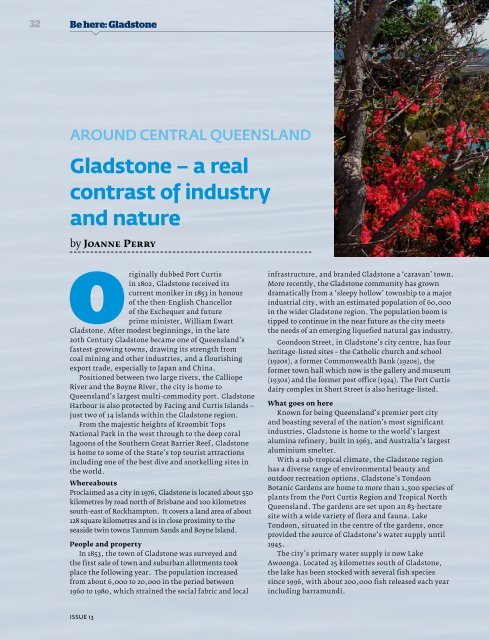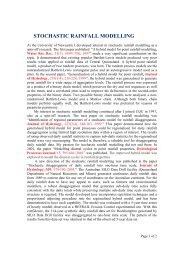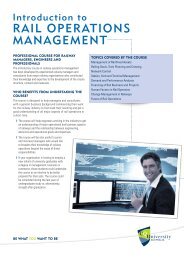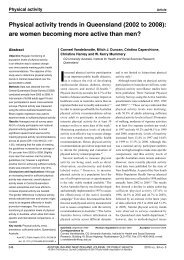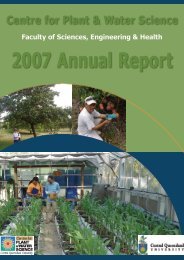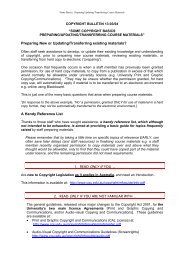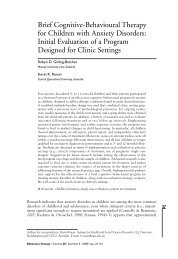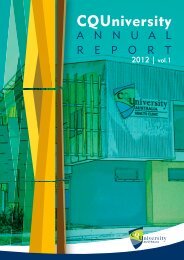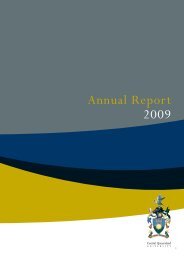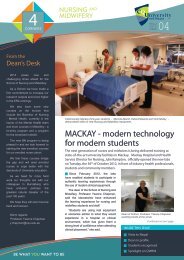View mobile device version - Central Queensland University
View mobile device version - Central Queensland University
View mobile device version - Central Queensland University
You also want an ePaper? Increase the reach of your titles
YUMPU automatically turns print PDFs into web optimized ePapers that Google loves.
32<br />
Be here: Gladstone<br />
AROUND CENTRAL QUEENSLAND<br />
Gladstone – a real<br />
contrast of industry<br />
and nature<br />
by Joanne Perry<br />
Originally dubbed Port Curtis<br />
in 1802, Gladstone received its<br />
current moniker in 1853 in honour<br />
of the then-English Chancellor<br />
of the Exchequer and future<br />
prime minister, William Ewart<br />
Gladstone. After modest beginnings, in the late<br />
20th Century Gladstone became one of <strong>Queensland</strong>’s<br />
fastest-growing towns, drawing its strength from<br />
coal mining and other industries, and a flourishing<br />
export trade, especially to Japan and China.<br />
Positioned between two large rivers, the Calliope<br />
River and the Boyne River, the city is home to<br />
<strong>Queensland</strong>’s largest multi-commodity port. Gladstone<br />
Harbour is also protected by Facing and Curtis Islands –<br />
just two of 14 islands within the Gladstone region.<br />
From the majestic heights of Kroombit Tops<br />
National Park in the west through to the deep coral<br />
lagoons of the Southern Great Barrier Reef, Gladstone<br />
is home to some of the State’s top tourist attractions<br />
including one of the best dive and snorkelling sites in<br />
the world.<br />
Whereabouts<br />
Proclaimed as a city in 1976, Gladstone is located about 550<br />
kilometres by road north of Brisbane and 100 kilometres<br />
south-east of Rockhampton. It covers a land area of about<br />
128 square kilometres and is in close proximity to the<br />
seaside twin towns Tannum Sands and Boyne Island.<br />
People and property<br />
In 1853, the town of Gladstone was surveyed and<br />
the first sale of town and suburban allotments took<br />
place the following year. The population increased<br />
from about 6,000 to 20,000 in the period between<br />
1960 to 1980, which strained the social fabric and local<br />
infrastructure, and branded Gladstone a ‘caravan’ town.<br />
More recently, the Gladstone community has grown<br />
dramatically from a ‘sleepy hollow’ township to a major<br />
industrial city, with an estimated population of 60,000<br />
in the wider Gladstone region. The population boom is<br />
tipped to continue in the near future as the city meets<br />
the needs of an emerging liquefied natural gas industry.<br />
Goondoon Street, in Gladstone’s city centre, has four<br />
heritage-listed sites – the Catholic church and school<br />
(1920s), a former Commonwealth Bank (1920s), the<br />
former town hall which now is the gallery and museum<br />
(1930s) and the former post office (1924). The Port Curtis<br />
dairy complex in Short Street is also heritage-listed.<br />
What goes on here<br />
Known for being <strong>Queensland</strong>’s premier port city<br />
and boasting several of the nation’s most significant<br />
industries, Gladstone is home to the world’s largest<br />
alumina refinery, built in 1963, and Australia’s largest<br />
aluminium smelter.<br />
With a sub-tropical climate, the Gladstone region<br />
has a diverse range of environmental beauty and<br />
outdoor recreation options. Gladstone’s Tondoon<br />
Botanic Gardens are home to more than 1,500 species of<br />
plants from the Port Curtis Region and Tropical North<br />
<strong>Queensland</strong>. The gardens are set upon an 83-hectare<br />
site with a wide variety of flora and fauna. Lake<br />
Tondoon, situated in the centre of the gardens, once<br />
provided the source of Gladstone’s water supply until<br />
1945.<br />
The city’s primary water supply is now Lake<br />
Awoonga. Located 25 kilometres south of Gladstone,<br />
the lake has been stocked with several fish species<br />
since 1996, with about 200,000 fish released each year<br />
including barramundi.<br />
ISSUE 13


